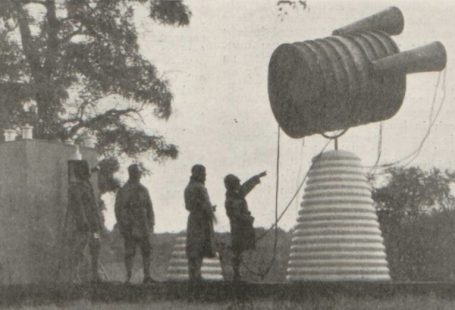This week has been another busy one here at The Archive as we have added 97,266 brand new pages to our collection – including one brand new title from Scotland. And it’s a lucky thirteen for our updated titles – with updates to newspapers from Rochester to Gloucester, from Ireland and Wales, as well as to some of our special interest publications.
So read on to discover more about our brand new title – the Greenock Herald – and the other updates we have made this week, as well as how a famous star of the musical halls turned to film during the First World War.
Register now and explore the Archive
Our new title this week is the Greenock Herald. First published in 1852, this newspaper appeared every Saturday priced at one penny. One of three newspapers appearing in the Scottish town of Greenock during the 1800s, the Greenock Herald contained local, national and international news, with reports on the weather, serialized fiction as well as advertisements for local businesses.
Greenock Herald | 30 October 1875
Greenock, a former burgh of Renfrewshire, is located the south bank of the River Clyde and has historic ties to both the shipping and shipbuilding industries. One of its most famous children is James Watt – the engineer after whom the unit of electricity was named. You can search the years 1875 to 1891 of the Greenock Herald right now on The Archive – but watch out for more updates to this wonderful Scottish title.
So what else is new on The Archive this week? Well, we have added another 70,000 pages to the Kinematograph Weekly, the weekly trade periodical for the cinema industry. Founded as the Optical Magical Lantern and Photographic Enlarger by entrepreneur Edward Thomas Heron, it changed its name to the Kinematograph Weekly in 1907.
Kinematograph Weekly | 3 January 1918
Within in its pages you can find advertisements for the latest film features – aimed at cinema managers across the country. To this end, the Kinematograph Weekly contains full descriptions of the films they showcased, just so cinema proprietors knew exactly what it was they were picking for their audiences!
This week we have added the years 1915 to 1922 to the Kinematograph Weekly, a period which saw the British film industry blossom. These years saw the production of wartime propaganda films (more on that later), at a time when 25% of films shown in British cinemas were British produced (by 1926 this had fallen to just 5% due to competition from the United States). In 1920 actor Leslie Howard founded Minerva Films, a short-lived venture, which saw A.A. Milne write four films for the company.
Kinematograph Weekly | 1 January 1920
Kinematograph Weekly survived the ‘Slump’ of 1924 – where many studios closed – and switched to the snappier name of Kine Weekly in 1959 before finally closing in 1975.
Other significant updates this week are to Kent’s Rochester, Chatham & Gillingham Journal, to which we have added the years 1866 to 1895. You’ll also find updates from the 1920s to the Halifax Evening Courier.
We have updates to two of our Welsh titles – to the wonderfully named Monmouthshire Merlin and the South Wales Echo, to which we have added over 3,000 pages. And finally, we have updates to one of our Irish titles – the Waterford News Letter – and another of our specialist titles – The Queen, which was established in 1861 by Samuel Beeton to follow the goings-on of high society and the aristocracy.
From Musical Hall to Film Set – the Incomparable Vesta Tilley
Vesta Tilley was perhaps one Britain’s most famous musical hall performers. In a remarkable career which began in 1879 and stretched to 1920, Vesta Tilley found her fame as a male impersonator, often performing as a dandy, or as the principal boy in pantomimes. Born in 1864 as Matilda Alice Powles, by the 1890s Vesta Tilley had become the highest paid woman in Britain.
Vesta Tilley | Musical Hall and Theatre Review | 7 July 1899
During the First World War she gained the reputation of being ‘England’s greatest recruiting sergeant,’ as she often appeared dressed in khaki, singing, at recruitment drives. And in this role she made a foray into silent film, starring in 1916’s The Girl Who Loves a Soldier, which is chronicled in the pages of our film periodical Kinematograph Weekly.
The Girl Who Loves a Soldier was something of wartime propaganda piece, appearing in 1916 and telling the story of a woman who reunites with her soldier lover after becoming a nurse and disguising herself on the battlefield.
Vesta Tilley dressed as a ‘Tommy’ | The Tatler | 17 January 1917
Indeed, Kinematograph Weekly remarks in August 1916 how ‘The production has a certain patriotic sentiment, displayed in a style that will make a direct appeal to the masses, and will, we have no doubt, be popular with the average picture patron.’
So what role did famous musical hall performer Vesta Tilley have to play in this film? The Kinematograph Weekly describes ‘Vesta Tilley’s Three Impersonations,’ as she took the leading role in the picture:
In the first reel Miss Tilley is introduced as a wealthy heiress, the daughter of a millionaire, and her interpretation of a young society girl, vivacious and full of fun, is excellent. It is an unusual departure for Miss Tilley to appear before the public as a member of her own sex, for she is perhaps, one of the best known of Briton’s male impersonators, and invariably appears in male attire. In the second reel she impersonates a Red Cross Nurse, and in the third a character that she has made famous on the halls – who does not know Vesta Tilley as a ‘Tommy?
Vesta Tilley at the beginning of The Girl Who Loves a Soldier | The Bioscope | 31 August 1916
What is wonderful here is that Vesta Tilley was 52 at the time of the film’s release – and she plays the role of a ‘young society girl’ with aplomb, as well as adopting a male persona for which she was so well known.
The film was a hit; at the premiere at Shaftsbury Pavilion ‘there was spontaneous and prolonged applause after each of the three reels and several individual incidents were also loudly applauded.’
Vesta Tilley | Musical Hall and Theatre Review | 12 June 1896
The Girl Who Loves a Soldier was also noted at the time for being something of a pioneer within the comedy-drama genre. The Kinematograph Weekly comments on this crossover, reporting how the ‘expression…in this case is amply justified, for it runs the whole gamut of the emotions, and laughter and tears, the serious and the lighter vein, are curiously allied.’
Ending ‘with the chime of wedding bells,’ the Kinematograph Weekly states confidently that The Girl Who Loves a Soldier ‘should prove popular with the majority of cinema goers.’
And by 1920 Vesta Tilley was playing a different role. Married to Walter de Frece, who was knighted in 1919, she set about a farewell tour which contributed all profits to children’s hospitals. As Lady de Frece, she supported her husband when he became an MP, as the Kinematograph Weekly relates in 1920, promoting ‘an interview with Miss Vesta Tilley, who will help her husband, Sir Walter de Frece, in an election campaign.’
After eventually retiring to Monte Carlo, Vesta Tilley passed away during a visit to England in 1952, and is buried at at Putney Vale Cemetery.
New Titles
Title | Years Added |
| Greenock Herald | 1875-1877, 1880, 1882, 1884, 1886, 1888, 1891 |
Updated Titles
This week we have updated thirteen of our existing titles.
You can learn more about each of the titles we add to every week by clicking on their names. On each paper’s title page, you can read a FREE sample issue, learn more about our current holdings, and our plans for digitisation.
Title | Years Added |
| Monmouthshire Merlin | 1871, 1874 |
| South Wales Echo | 1885 |
| Runcorn Weekly News | 1973 |
| Halifax Evening Courier | 1921-1923, 1925 |
| Waterford News Letter | 1890, 1894 |
| Kinematograph Weekly | 1915-1922 |
| Rochester, Chatham & Gillingham Journal | 1866, 1870, 1873, 1876-1877, 1883-1891, 1894-1895 |
| The Halesworth Times and East Suffolk Advertiser. | 1866, 1880 |
| Herts and Essex Observer | 1862-1863, 1879 |
| Gloucester Mercury | 1874-1877, 1879-1880 |
| Evening Mail | 1873 |
| The Queen | 1863 |
| Pontefract Advertiser | 1859 |
You can keep up to date with all the latest additions by visiting the recently added page. You can even look ahead to see what we’re going to add tomorrow.














